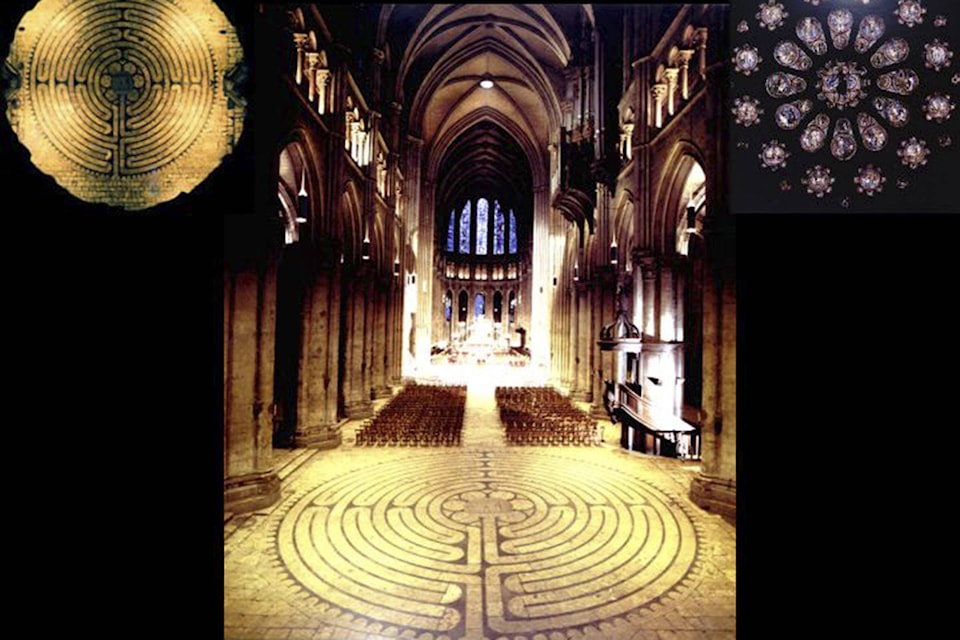Solvitur ambulando, “it is solved by walking,” is attributed to Diogenes of Sinope and also to St. Augustine of Hippo, both the fourth century BC and describes the labyrinth.
Unlike a maze whose purpose is to confuse, the labyrinth is a meditative prayer path that winds into the centre of the sacred circle and back out again.
The labyrinth has been in existence for more than 4,000 years, long before Christianity, and is an important spiritual tool to many peoples of the world.
Walking the labyrinth is an ancient method of walking a circular path, letting go, regenerating, and returning to the world renewed.
And people in Salmon Arm can partake in this spiritual practice.
Everyone is invited to take part in a three-week guided walk Mondays at 10 a.m. Oct. 16, 23 and 30 in the United Church hall where a smaller version of the Chartres labyrinth is painted on the floor. For other times, call the church office at 250-832-3860.
It is an archetypical blueprint for wholeness which balances the left and right brains and aids in bring us into Divine connection.
Many labyrinth walkers say that it helps them feel more centred and brings clarity to life’s issues. Lauren Artress in her book, Walking a Sacred Path, describes it as, “ a container for creative imagination to align with our hearts desire, it is a place where we can profoundly, yet playfully experience our soul’s longing and intention.”
It is a mystery where it originated but we know it has been around in different forms for more than 5,000 years. The famous labyrinth in Chartres Cathedral in France was built in the 12th Century on an already sacred mound. In the days when it was dangerous to do a pilgrimage to Jerusalem, pilgrims walked the labyrinth symbolically, the centre representing Jerusalem. The centre can also represent stillness, illumination, and peace. It is a useful device for the chaos of our inner and outer worlds.
@SalmonArm
barbbrouwer@saobserver.net
Like us on Facebook and follow us on Twitter
